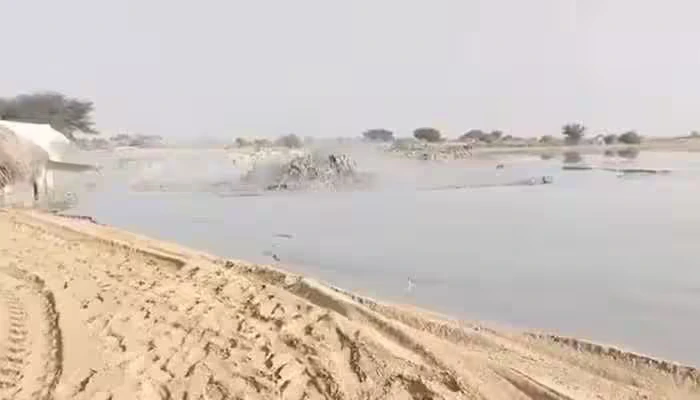
On December 28, 2024, a surprising event took place in Mohangarh Canal Area, Jaisalmer, Rajasthan, during a tubewell drilling operation. Water unexpectedly gushed from the ground, leading to widespread speculation about the possible resurgence of the ancient Saraswati River. However, experts soon clarified that this occurrence was more likely the result of an artesian well, a natural phenomenon where water rises to the surface under pressure.
Can some geologist explain what’s happening in Jaisalmer ??
It is verified that there is no water pipeline burst here, is this really a aqua-duct that we have found suddenly??
Where were our satellites before?
I have confirmed with reliable people that the place is still… pic.twitter.com/rrummViLgP
— Aryaman (@AryamanBharat) December 30, 2024
What Are Artesian Wells?
An artesian well is a type of water well where water rises to the surface naturally, without the need for mechanical pumping. This happens when groundwater is confined under pressure within a geological layer, typically sandstone. When a borehole is drilled into the layer, the built-up pressure forces the water to the surface. This natural flow can occur in regions with confined aquifers, where the water is trapped between impermeable layers of rock.
Geological Factors Behind the Incident
In the case of the Mohangarh water surge, the drilling operation likely breached a sandstone barrier that encapsulated an aquifer. Once the borehole penetrated this layer, the pressurized water escaped forcefully, causing the sudden gush. This type of water flow is not uncommon in desert landscapes like Rajasthan, where underground aquifers are prevalent, and pressure-driven water movements are occasionally seen.
Safety Assessments and Expert Opinions
After the incident, experts conducted safety assessments to ensure that the water surge posed no risk to the local community. Hydro-geologist Narayan Das Inakhiya confirmed that the flow of water had ceased shortly after the initial surge, and no immediate danger to residents was reported. Government teams also tested the gases released during the water flow and found them to be non-hazardous, further reassuring the local population.
Future Investigations
The phenomenon prompted interest from the Union Minister for Science and Technology, Jitendra Singh, who announced plans for further investigation into Rajasthan’s underground water resources. Scientists from the Council of Scientific and Industrial Research (CSIR) will conduct detailed surveys using advanced equipment, including heliborne surveys, to identify and map more underground aquifers in the region. These efforts will help uncover hidden water sources and improve water management strategies for Rajasthan’s arid landscape.
The Saraswati River: Myth or Reality?
The Saraswati River, which is mentioned more than 80 times in the Rigveda, holds immense cultural and historical significance in Hindu mythology. It is believed to have been a major river flowing through northern India thousands of years ago. However, due to climatic changes and tectonic shifts, the river is believed to have dried up over 5,000 years ago, leading to its mythological status. Many have speculated that traces of the river might still exist underground, fueling the intrigue surrounding recent water surges.
The Importance of Local Governance in Water Management
Local authorities play a crucial role in managing water resources and ensuring sustainable practices. In Rajasthan, the government has emphasized the importance of understanding the region’s aquifers for future water management. Proper regulation and monitoring of drilling activities are essential to avoid over-exploitation and ensure that water sources remain sustainable for future generations.
Key Takeaways:
- Artesian Wells: These are natural water wells that occur when groundwater under pressure rises to the surface, often due to geological layers being penetrated.
- Geological Features in Rajasthan: The state’s desert landscape and the presence of underground aquifers make artesian wells a possible occurrence.
- The Saraswati River: While the ancient river has mythological importance, experts believe the resurgence of water is more likely linked to geological phenomena rather than the return of the Saraswati.
- Future Surveys: The use of heliborne surveys and advanced equipment will help map more underground water resources in Rajasthan to support the state’s water management.
Also Read: 40 Years After Bhopal Gas Tragedy: Toxic Waste Relocation Begins
Disclaimer
This article is for educational purposes, focusing on the relevance of the topic for UPSC aspirants. Students should stay updated on further developments and refer to official sources for comprehensive preparation.
Follow Fusion IAS


